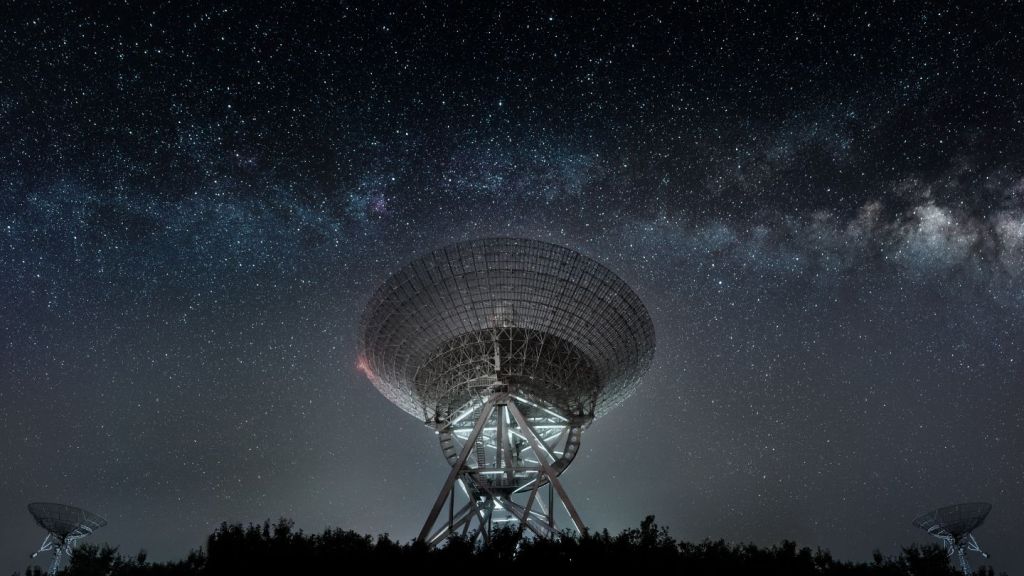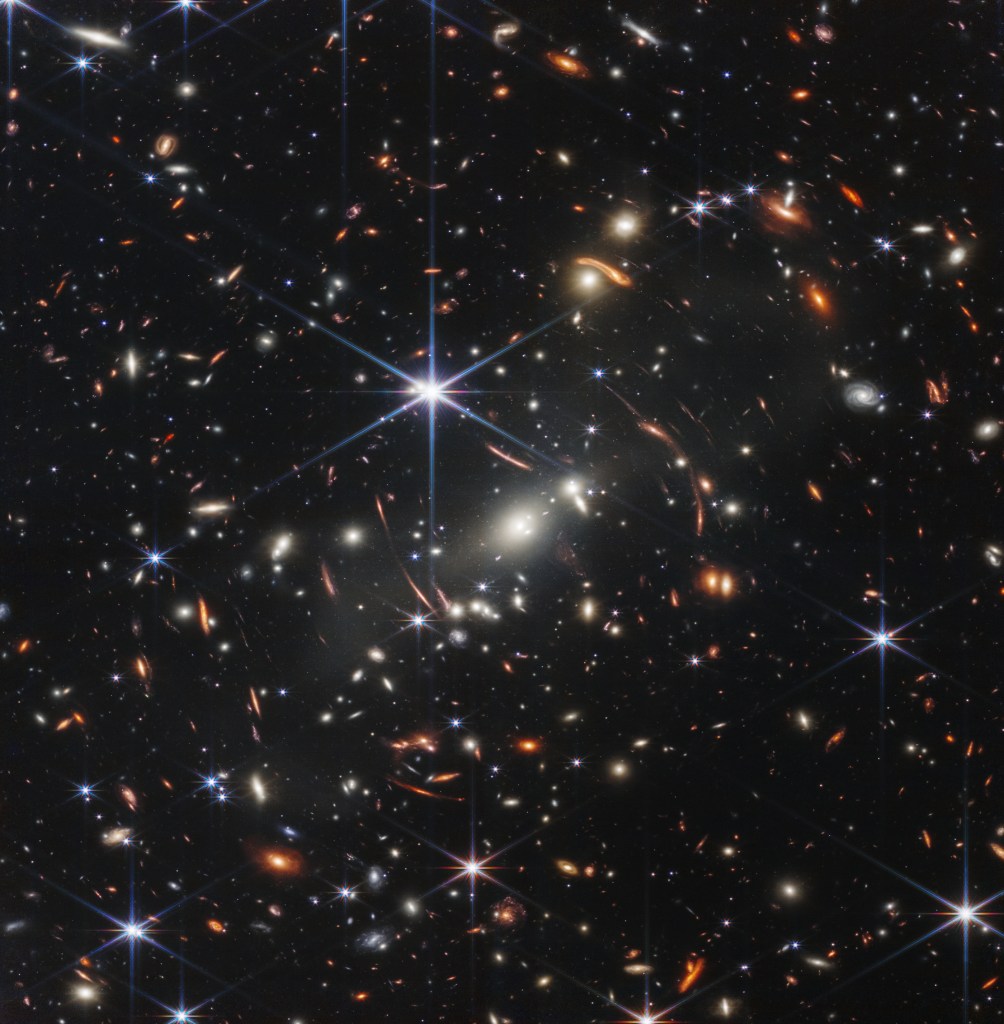Scientists have discovered a crucial radio signal known as the 21-centimeter line, which is the key to unlocking many cosmic mysteries, in the most distant galaxy yet, reports a new study.
Previously, this type of signal had only been spotted in galaxies within a few billion light years of Earth, but the new detection hailed from a galaxy that existed nearly nine billion years ago, when the universe was about a third of its current age. Scientists were only able to spot the signal because a natural telescope created by another celestial body, called a gravitational lens, magnified it 30 times over, providing an unprecedented glimpse of processes in the early universe.
Videos by VICE
The 21-centimeter line, also known as the hydrogen line, is named after the 21-centimeter wavelengths emitted by neutral hydrogen atoms in deep space. These atoms are the fuel that feeds star formation in galaxies, making them an important window into the evolution of stars and galaxies.
However, the radio signals emitted by neutral hydrogen are very faint, which means that it is only possible to see them at low “redshifts,” which is a measurement that constrains the age and distance of astronomical objects.
Now, a pair of scientists led by Arnab Chakraborty, a post-doctoral research fellow at McGill University, used the Giant Metrewave Radio Telescope in India to spot “the highest redshift [hydrogen line] detection in emission from an individual galaxy to date,” according to a new study published in Monthly Notices of the Royal Astronomical Society. The team detected the signal in the galaxy, called SDSSJ0826+5630, thanks to the amplification provided by the warped spacetime effects of the gravitational lens.
“The strong gravitational lens, nature’s gift, magnifies the weak emission signal coming from distant objects, enabling us to peer through the high-redshift universe,” said Chakraborty and his co-author, Nirupam Roy of the Indian Institute of Science, in the study.
“Strong gravitational lensing phenomenon can significantly amplify the faint signal, enabling us to detect the [hydrogen] signal from galaxies at higher redshifts in a reasonable observation time,” the team added.
Gravitational lenses are formed when massive objects, such as galaxy clusters, are positioned in front of more distant background objects from our line-of-sight on Earth. These foreground objects are so huge that they warp spacetime in their vicinity, creating something of a cosmic funhouse-mirror that can both multiply and magnify the background objects.
The lens located in front of SDSSJ0826+5630 produced a close-up image that allowed Chakraborty and Roy to pick out the key 21-centimeter signal at this record-breaking distance.
While some studies have detected the signal even further back in the universe by “stacking” observations of distant galaxies, Chakraborty and Roy are the first to trace it so far back to an individual galaxy. This technique enabled the researchers to calculate the amount of star-forming gas in the far-flung galaxy, revealing that SDSSJ0826+5630 has almost twice the amount of star fuel as galaxies closer to Earth.
The new study may pave the way to similar efforts to spot the 21-centimeter signal in the ancient universe, which could be used to probe the origins and evolution of stars and galaxies across vast stretches of cosmic time.
“These results, for the first time, demonstrate the feasibility of observing high-redshift [21-centimeter emission] in a lensed system with the modest amount of telescope time and open up exciting new possibilities for probing the cosmic evolution of neutral gas with existing and upcoming low-frequency radio telescopes in the near future,” the team concluded in the study.




